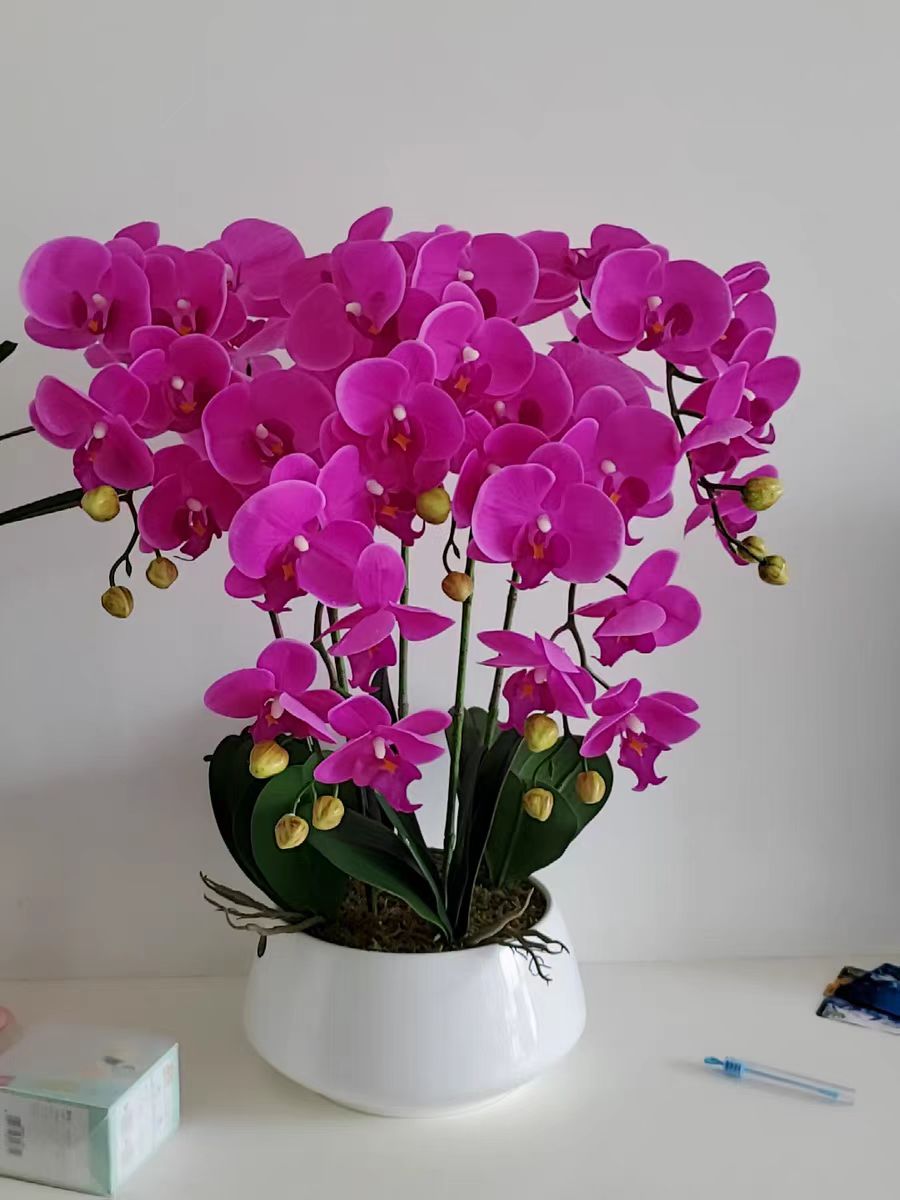When phalaenopsis plants are growing vigorously, many people choose division propagation to cultivate new plants. However, this raises questions: Will phalaenopsis bloom again the following year after division? How long will it take for the beautiful flowers to bloom again after division?
From the perspective of plant growth laws, phalaenopsis has the possibility of blooming the following year after division, but it is not absolute. Whether phalaenopsis can bloom the next year after division depends on several key factors. The primary factor is the state of the plant at the time of division. If the mother plant is robust and the divided daughter plants are relatively mature, with a sufficient number of healthy roots and leaves, the divided daughter plants have a greater chance of blooming in the coming year.
Conversely, if the daughter plants are too weak at the time of division and the roots are severely damaged, they will take a long time to recover, and blooming the next year cannot be guaranteed. Secondly, the post-division maintenance management has a profound impact on blooming. Suitable temperature, light, water, and nutrients are necessary conditions for phalaenopsis to bloom. Phalaenopsis after division is more sensitive to the environment. If the temperature is inappropriate during maintenance, too high or too low, it will affect the growth and development process of the plant; insufficient light will weaken photosynthesis, making it difficult to accumulate enough nutrients for flower bud differentiation; improper watering causing water accumulation or water shortage may lead to root rot or poor growth; insufficient nutrient supply, lack of flower-promoting elements such as phosphorus and potassium, will also hinder blooming.
There is no fixed standard answer for how long it takes for phalaenopsis to bloom after division, as it varies due to the comprehensive effect of various factors. Generally, if the division operation is scientific and the maintenance management is proper, and the daughter plants grow rapidly, they may enter the flowering period 8-12 months after division. During this time, the plant needs to complete root recovery and growth, the germination of new leaves, and accumulate enough nutrients for flower bud differentiation and development.
When the plant grows to a certain stage and accumulates sufficient nutrients, it will enter the reproductive growth stage, and then (pull out flower spikes) and bloom. However, if the daughter plants are small at the time of division, or if there are problems such as large temperature fluctuations, unreasonable light, and insufficient fertilization during maintenance, the blooming time may be delayed to 12-18 months or even longer. Some phalaenopsis may experience prolonged growth stagnation and be difficult to bloom in the short term due to harsh environmental conditions or improper maintenance after division.
In order to improve the probability of blooming after phalaenopsis division and shorten the waiting time, it is necessary to select vigorous mother plants during division to ensure that the divided daughter plants are strong and have complete roots. After division, place them in a warm, well-ventilated environment with sufficient scattered light, keep the temperature between 18-28°C, and avoid direct sunlight from burning the plants. Watering should follow the principle of "seeing dry and seeing wet" to keep the substrate moist but not waterlogged. In terms of fertilization, nitrogen fertilizer can be appropriately supplemented in the early stage of division to promote root and leaf growth, and phosphorus and potassium fertilizers such as potassium dihydrogen phosphate can be increased in the later stage to promote flower bud differentiation.
The blooming time and possibility of phalaenopsis after division are closely related to the state at the time of division and subsequent maintenance management. As long as scientific division methods and maintenance techniques are mastered, and suitable growth environments are provided for phalaenopsis through reasonable regulation of light, temperature, humidity, and fertilization, it will help shorten the blooming time after division and improve the blooming quality. With careful care, you can welcome the beautiful moment of phalaenopsis blooming after division in the near future.
Will phalaenopsis bloom again the following year after division?

Share with
Tagged in :




Leave a Reply